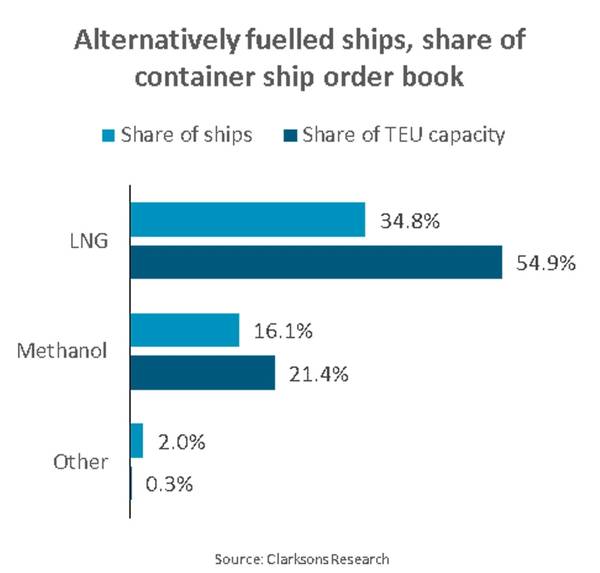
“As of end August 2025, 534 container ships are on order which will be able to use alternative fuels upon delivery. These represent 53% of ships on order and 77% of the TEU,” says Niels Rasmussen, Chief Shipping Analyst at BIMCO.
In addition to these alternatively-fuelled ships, the order book also includes 321 ships that will use heavy fuel and another 155 ships that will be delivered ready for a future conversion to alternative fuels.
Alternative fuels have proven particularly popular for the largest ships while orders for smaller alternatively-fuelled ships lag behind. For ships with 8,000 TEU capacity or more, 81% of the ships and 85% of the TEU capacity on order are for alternatively-fuelled ships.
“Despite an increase in orders for alternatively-fuelled ships in recent years, the other three main shipping sectors still lag behind the container sector in this respect. In the bulker, crude tanker and product tanker sectors, alternatively-fuelled ships only make up only respectively 8%, 17% and 9% of the ships on order,” says Rasmussen.
There can be several reasons why the bulker and tanker sectors still order comparatively fewer alternatively-fuelled ships. However, it seems likely that the prevalence of smaller operators in those sectors may negatively impact orders, whereas the container sector is controlled by a few large companies.
LNG remains the most popular alternative fuel, with LNG-fuelled ships now accounting for two-thirds of all alternatively-fuelled ships on order. In comparison, methanol-fuelled ships represent 31% of the total. While methanol led alternative fuel orders in 2023, it has since been overtaken by LNG.
The shift back towards LNG highlights a key concern when contracting alternatively-fuelled ships: availability of fuel. While the technology to build ships capable of low carbon operation is available, the availability of the fuel needed appears to be lagging behind. LNG is currently available mainly as a carbon fuel but could in future increasingly become available as a low carbon biofuel or e-fuel.
“Assuming that none of the alternatively-fuelled ships in operation are recycled, the container fleet in 2030 will include 837 alternatively-fuelled ships with 10.9 million TEU capacity once all the ships in the order book have been delivered. That could equal more than 25% of all the container capacity in operation by then,” says Rasmussen.



